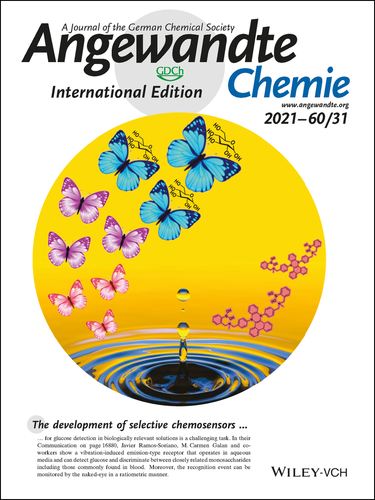
Dr. Javier Ramos-Soriano, M. Sc. Sergio J. Benitez-Benitez, Prof. Anthony P. Davis, Prof. M. Carmen Galan
Angew. Chem. Int. Ed. 2021, 60, 16880–16884
Abstract
The development of chemosensors to detect analytes in biologically relevant solutions is a challenging task. We report the synthesis of a fluorescent receptor that combines vibration-induced emission (VIE) and dynamic covalent chemistry for the detection of glucose in aqueous media. We show that the bis-2-(N-methylaminomethyl)phenylboronic acid-decorated N,N′-diphenyl-dihydrodibenzo[a,c]phenazine (DPAC) receptor 1 can detect glucose and discriminate between closely related monosaccharides including those commonly found in blood. Preliminary studies suggest monosaccharides bind to the DPAC-receptor with a 1:1 stoichiometry to produce pseudomacrocyclic complexes, which in turn leads to distinct optical changes in the fluorescent emission of the receptor for each host. Moreover, the complexation-induced change in emission can be detected visually and quantified in a ratiometric way. Our results highlight the potential of VIE-type receptors for the quantitative determination of saccharides in biological samples.